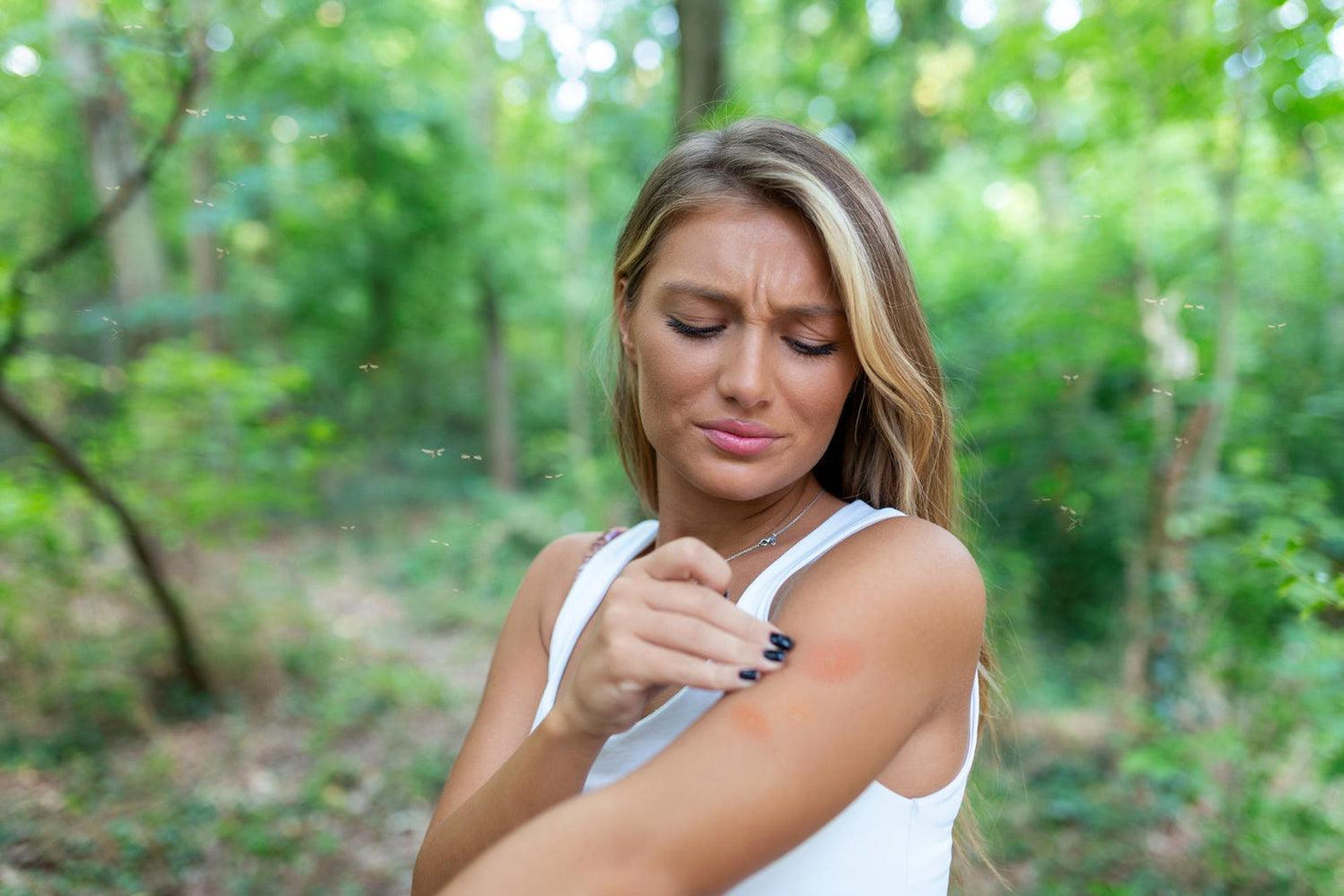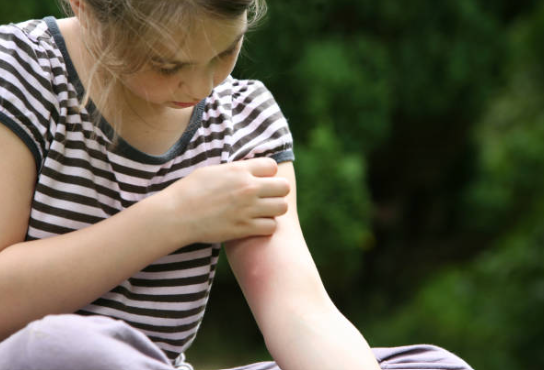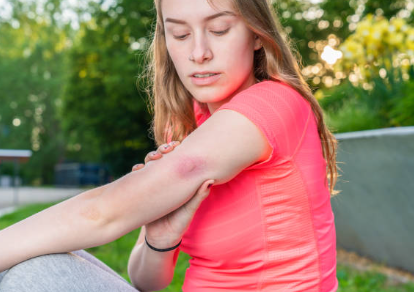What Does a Tick Bite Look Like?



Tick bites are generally harmless, but they can lead to serious illness if you're bitten by a tick infected with Lyme disease or Rocky Mountain spotted fever. If you think a tick has bitten you, see your doctor as soon as possible. Most tick bites are painless and cause only minor signs and symptoms, such as redness, swelling or a sore on the skin.
To protect you against ticks and other insect bites, check this link.
Most tick bites are painless and cause only minor signs and symptoms, such as redness, swelling or bumps.
The most common symptom of a tick bite is a small red bump similar to the spot you might get from a mosquito bite. The bump is caused by an allergy to tick saliva or an infection from bacteria transmitted by the tick's bite. A skin rash around the area of your skin where a thick bit can also occur after being bitten by an infected tick — although this is not always present in those who have been infected with Lyme disease.
If a tick attaches to you, it will inject its saliva into your skin. This can cause an allergic reaction in some people. If the bite became infected with bacteria, it could help spread bacteria through your system and lead to other health issues.
Tick bites may cause redness, swelling or pain at the bite site that generally goes away after several days. Rarely do ticks inject toxins into humans. However, if this happens, it usually results in a small red spot at the bite site that expands over time into a large bull's-eye pattern (Lyme disease).
You may have heard of ticks before, but you might need to learn what they look like and what to do if you get bitten by one. Ticks are tiny arachnids that live on the ground, in tall grasses, in trees, and even in your backyard. They feed on blood from animals (and sometimes people) by attaching themselves to their victims with two tiny barbs that pierce the skin. Some ticks can make people sick, or allergic reactions happen after being bitten. Still, others don't cause any problems at all.
If a tick bites you and doesn't fall off within 24 hours, it's probably still feeding on your blood. This can cause redness and swell around where it bit you, as well as painless lumps under your skin, called tick granulomas that appear within three weeks after being bitten by a tick; they're usually very small (less than 1 centimetre across). If this happens to you, see a doctor right away so they can remove the tick before it has time to transmit anything dangerous like Lyme disease!
While identifying a tick bite can be complex, there are some common signs you should look out for.
A small red spot at the site of the bite expands over days
Redness and swelling around the area
Bull's eye pattern at the site of tick attachment

Lyme disease is a bacterial infection caused by Borrelia burgdorferi. The bacterium is transmitted through the bite of an infected deer tick. Lyme disease can affect the skin, joints, nervous system and heart.
The following characteristics may appear on your skin in response to being bitten by an infected tick:
A large bull's-eye pattern at the site of the bite (Lyme disease)
Lymph nodes are small, bean-shaped structures that are part of your immune system. They're found in your neck, underarms, groin and other body areas. When you have a tick bite and notice swollen lymph nodes in the area of the bite, it can mean that you have Lyme disease or another tick-borne illness.
Suppose you've been bitten by a deer tick (or any other kind). In that case, you must see your doctor for testing for Lyme disease and possibly other conditions. If the wound is not treated right away with antibiotics, it may take longer to heal than normal because bacteria remain inside the tissues around your injury.
You may also notice a fever. Fever is a sign of an infection, so it's not always indicative of Lyme disease, but it can be. If your temperature goes above 101°F and lasts for several days, consult a doctor immediately. You might have Rocky Mountain spotted fever or another tick-borne illness instead of Lyme disease.
Muscle aches and joint pain are common symptoms of Lyme disease. However, these symptoms can also be caused by other illnesses, so it's essential to see a doctor for a diagnosis.
Lyme disease is treated with antibiotics. You can also try to relieve itchiness caused by tick bites using a proven effective multi-use treatment.
If you find a tick attached to your skin, don't panic. Ticks are not too dangerous, but if left untreated, tick bites can transmit disease to you or your pet. You want to remove it as soon as possible, so let's get started!
First, use fine-tipped tweezers if it's attached to your skin. Pull upward from the head of the tick to remove it from your skin. If you can't see the head of the tick, pull upward from where you feel it on your skin until you feel resistance. Then slowly and carefully lift the tick until it releases its grip on your skin or hair.
Second, after removing the tick from your skin (or fur), place it in alcohol so it can die off quickly and safely. You can freeze ticks for 24 hours if you don't have any rubbing alcohol available. This will also kill them slowly so they don't cause any harm while they're still alive (though freezing them will take longer than just putting them in alcohol). If multiple ticks are attached to one area of skin or hair (as is often seen in dogs), remove each one individually to prevent them from feeding on each other's blood supply until all of them are dead. Finally, it's important to remember that you should never burn a tick off of yourself or your pet. This can cause the tick to regurgitate its stomach contents into your skin, leading to an infection or allergic reaction later. Once you've removed all the ticks, clean the area where they were attached with soap and water or rubbing alcohol so that no bacteria remains behind.
You can also try using an insect repellent that is proven to be effective.
Contrary to popular belief, ticks are not insects—they have eight legs and are technically arachnids. Ticks can transmit disease to humans, but a tick bite is usually harmless. They're found in grassy and wooded areas, most commonly in spring and summer. They stay on the host until they've had a chance to feed (or if they're disturbed).
Tick bites are most common when walking through tall grass or other vegetation. Suppose the tick attaches itself under your skin while walking through tall grass or bushes. In that case, it will be difficult to see it before it has already bitten into your skin (possibly transmitted an illness).
Ticks have three life stages: larva, nymph and adult. In each stage of their lives, ticks must feed on blood before moving on to the next phase of growth:
Larvae eat only one blood meal.
Nymphs eat two meals.
Adults eat three or four meals before laying eggs that hatch into new larvae, which start the cycle over again.
We hope that this article has helped you understand how to identify a tick bite and tick-borne infection as well. We recommend seeking medical attention quickly if you suspect you have an infected tick bite. Although ticks typically bite and are harmless, they can lead to serious illness if left untreated. Remember that ticks carry diseases such as Lyme disease rash, bull's eye rash and tick-borne disease which they may gradually spread to other parts of your body.
In the event you started to experience body aches and muscle weakness, it is best to consult your healthcare provider or an infectious disease specialist to determine the exact cause of your condition.










Plus get the inside scoop on our latest content and updates in our monthly newsletter.